Key takeaways:
- Understanding cultural appropriation involves considering intention, power dynamics, and respect for the origins of stories and traditions.
- Storytelling preserves cultural values, fosters empathy, and challenges stereotypes, making it essential for connecting generations and promoting global citizenship.
- Cultural sensitivity in children’s storytelling can empower young voices and encourage respect for diverse narratives and their origins.
- Encouraging curiosity, asking questions, and honoring storytellers’ backgrounds are crucial practices in promoting respectful storytelling.
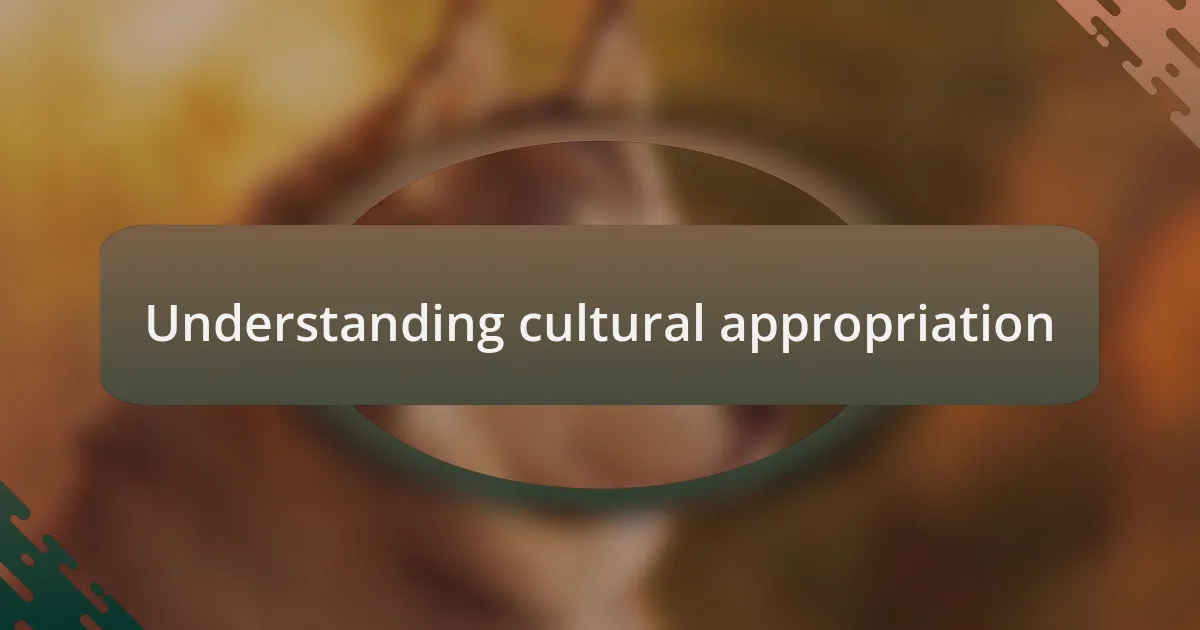
Understanding cultural appropriation
Cultural appropriation can be a complicated subject. I remember a time at a local festival where someone wore a traditional outfit from a culture they didn’t belong to. As I watched, I felt a mix of admiration and discomfort—was this an appreciation of the culture or a moment of disrespect? That experience made me realize that intention matters, but it’s not the only factor to consider.
When we think about cultural appropriation, it often raises questions about power dynamics. Who gets to borrow elements from another culture, and under what circumstances? I’ve reflected on this a lot in storytelling—are we sharing narratives to celebrate and honor them, or are we simply taking without considering the implications? It’s essential to approach different cultures with a sense of responsibility and awareness.
On a personal note, I’ve seen how storytelling connected my family with our cultural roots, and it pains me to think about those roots being diluted or misrepresented. Each story carries history and meaning, and when we tell stories from cultures that are not our own, what are we risking? It’s crucial to engage in these conversations and to mindfully acknowledge the origins of stories we share, ensuring they’re done with respect rather than appropriation.
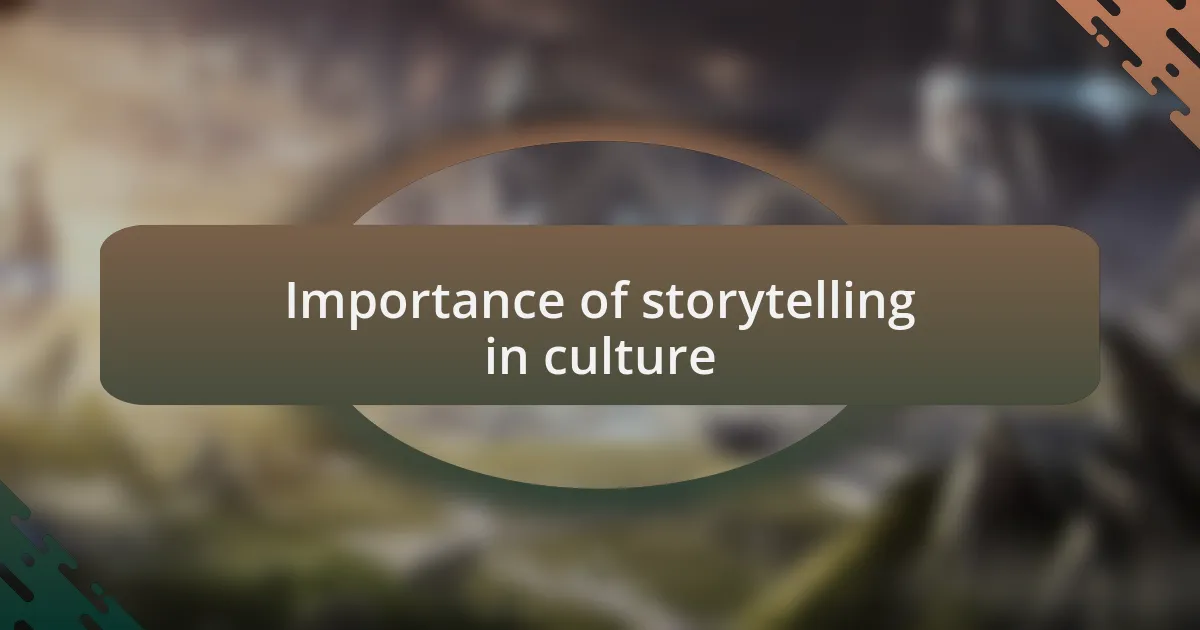
Importance of storytelling in culture
Storytelling is a vital thread that weaves together the fabric of culture. I remember sitting around a campfire as a child, listening to my grandmother share tales from her own childhood. Those stories were not just entertainment; they were lessons wrapped in anecdotes, connecting me to our family’s history and values. Each tale she told was like a treasure, passing down wisdom that shaped not only my understanding of the world but also my identity.
Cultural stories preserve the essence of a community, acting as a bridge between generations. They remind us of our shared humanity and the diversity of experiences that enrich our lives. I often think about how a simple story can spark curiosity in kids about cultures different from their own. Have you ever witnessed a child’s eyes light up as they immerse themselves in a story about another part of the world? That moment can foster empathy and understanding, nurturing a sense of global citizenship.
Moreover, storytelling is a powerful way to challenge stereotypes and break down barriers. I once attended a storytelling workshop that invited diverse speakers to share personal narratives. The way their stories shaped my perceptions was profound. It made me realize that storytelling isn’t merely about sharing experiences—it’s about building respect for the complexities of different cultures, allowing us to learn and grow together. Isn’t that what we all want for the next generation?
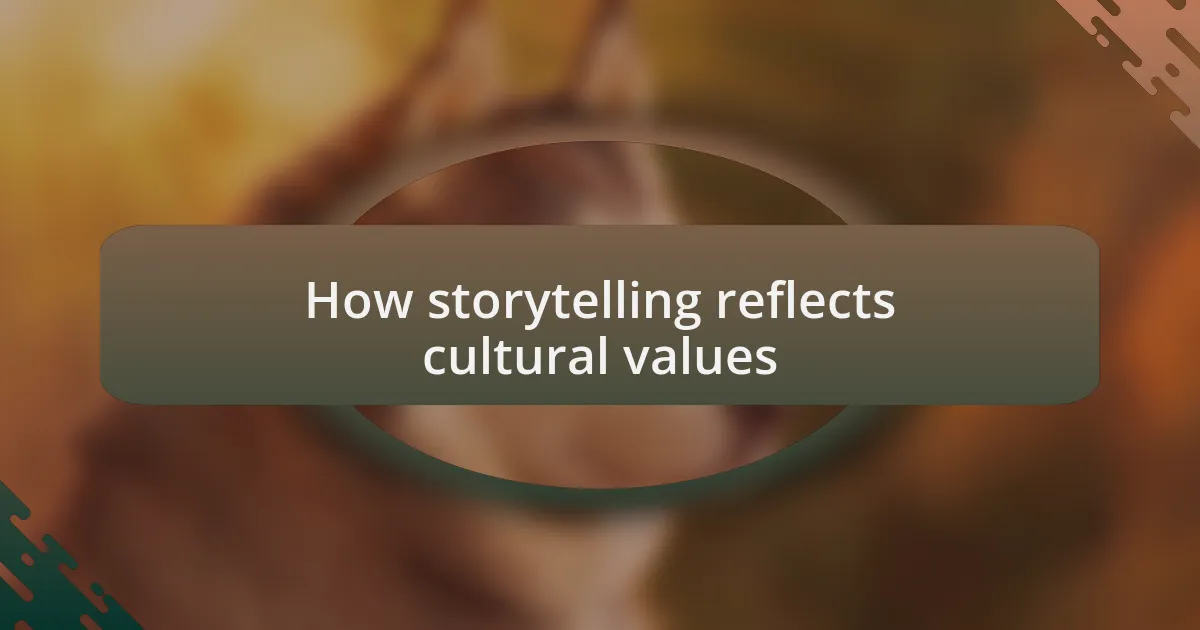
How storytelling reflects cultural values
Stories serve as mirrors reflecting the values and beliefs of a culture. I remember being captivated by a folktale from a distant land, where courage and community prevailed against all odds. It struck me how every culture has its unique narratives that highlight what they cherish—be it bravery, loyalty, or compassion. Why do you think certain themes resonate across generations?
As I explored various storytelling traditions, I observed how different cultures use tales to express their moral compass. In some Native American stories, for instance, animals are depicted as wise teachers, embodying respect for nature and interconnectedness. This emphasis on harmony with the environment reveals deeper cultural values that are essential for understanding their way of life. Isn’t it fascinating how a simple story can encapsulate an entire worldview?
Moreover, I’ve noticed how stories can provoke conversations about identity and heritage. I recently hosted a storytelling night where participants shared their cultural tales. It was moving to see how each story illuminated perspectives I had never considered, reminding me that these narratives are not just entertainment; they are vital threads in the tapestry of our shared existence. What stories from your own life hold that kind of power and meaning?

Kids storytelling and cultural sensitivity
Stories have a way of weaving cultural nuances into their fabric, and I often think about how important it is to approach kids’ storytelling with cultural sensitivity. When I narrated a tale from my childhood, rooted in my family’s traditions, I felt an almost palpable connection to my heritage. This experience made me realize how vital it is for children to understand and respect the origins of the stories we share. How can we encourage this respect in young listeners and budding storytellers?
As I’ve ventured into storytelling workshops for children, I’ve seen the magic that occurs when diverse cultural tales are introduced thoughtfully. One time, a young storyteller found a way to blend elements of her own cultural background with a traditional folktale, creating something vibrant and new. This not only honored the original story but also gave her a voice, highlighting the beauty in celebrating our differences rather than appropriating them. Isn’t it wonderful to witness a child’s creativity flourish in such an inclusive environment?
It’s essential to recognize that stories are more than just words; they encompass the values, struggles, and joys of the people from whom they originate. Reflecting on my experiences, I often wonder how we can ensure that children develop empathy and a sense of responsibility towards the cultures they explore. I believe engaging them in discussions about these narratives can help instill a deeper appreciation for the rich tapestry of human experience. What do you think? How can we shape the next generation of storytelling with this awareness?
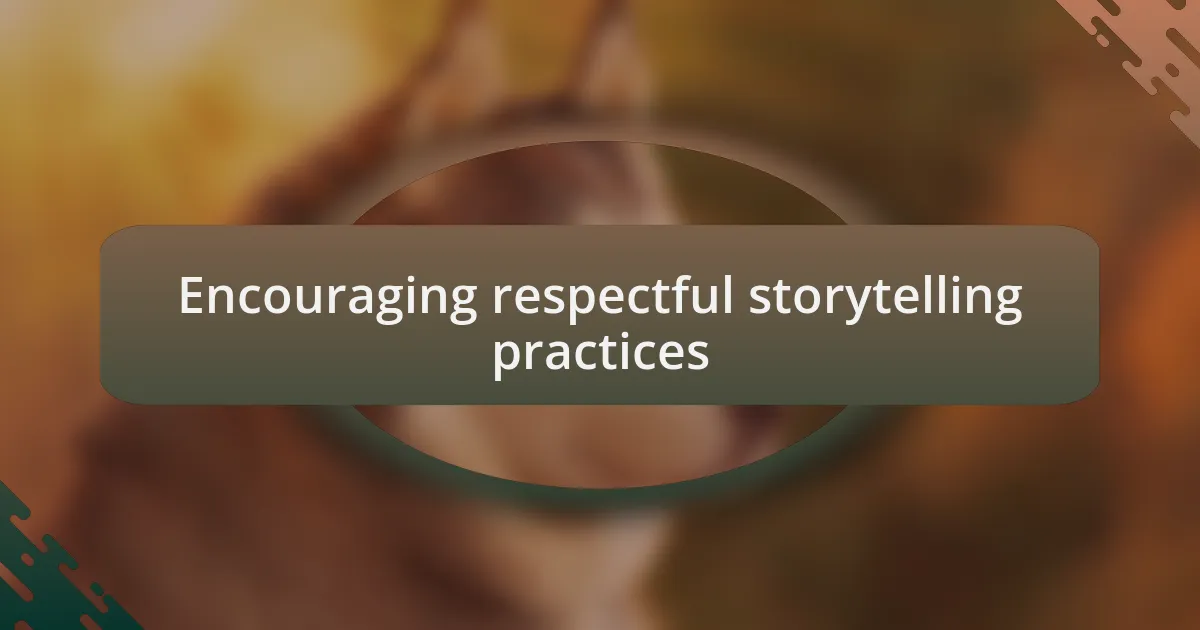
Encouraging respectful storytelling practices
When I facilitate storytelling sessions, I always emphasize the importance of asking questions before telling a story. For instance, I encourage young storytellers to think about who the story speaks for and whether they truly understand its context. This introspective approach not only fosters respect but also helps children grasp the significance of cultural roots—why do you think that connection matters so much?
One unforgettable moment occurred when a child shared a tale from their heritage, pausing to explain the cultural symbols woven throughout. This simple act opened the door for their peers to engage in discussion about the story’s meaning and its cultural implications. It struck me then how vital these conversations are; they lay the groundwork for understanding and respect, transforming storytelling into a shared experience rather than a one-sided narrative. Isn’t it incredible how curiosity can cultivate compassion?
Moreover, I often remind children to honor the storytellers who came before them. I once witnessed a young boy respectfully ask about the origins of a popular folktale he heard. It made me realize how questions can lead to moments of discovery and learning. In my experience, when we encourage children to research and appreciate the stories’ backgrounds, we equip them with the tools to appreciate cultural diversity genuinely. What if every story told was preceded by a heartfelt quest for understanding?
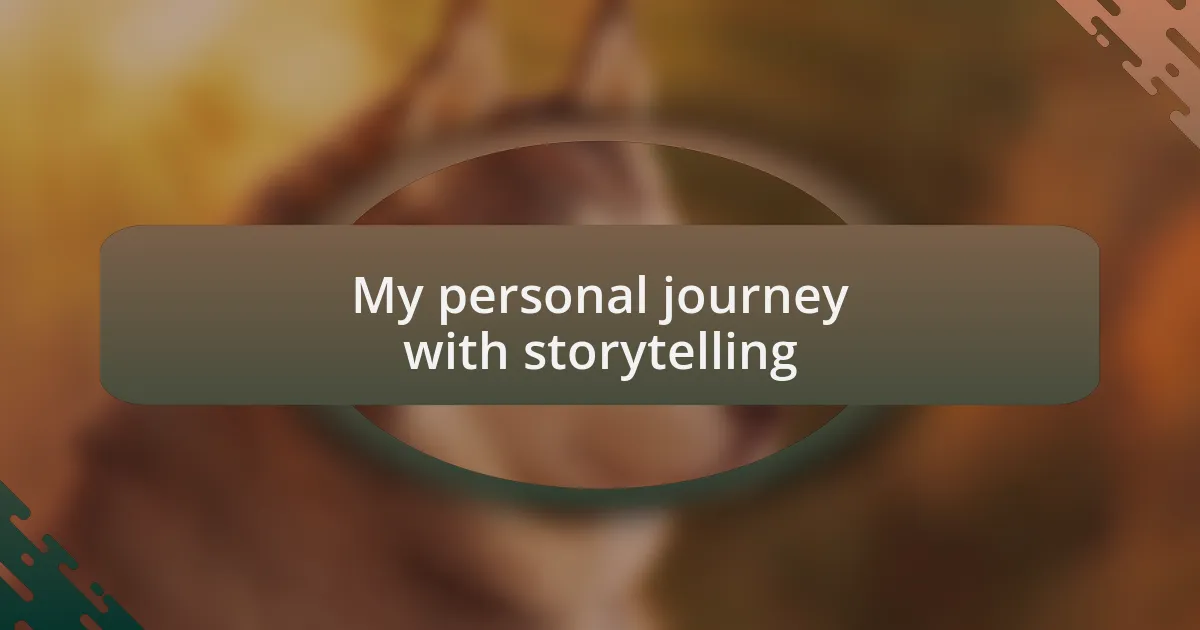
My personal journey with storytelling
My journey with storytelling began in my childhood, where my grandmother would gather us around her as she narrated tales from her youth. Each story was rich with emotion—her eyes would sparkle with nostalgia, and I quickly learned that every tale held lessons about culture and identity. To this day, I cherish those moments, recognizing how they planted the seeds of connection and curiosity in me.
As I grew older, I started sharing my own stories, often reflecting on my family’s traditions. I remember a particular evening when I told my classmates about our unique celebration — the laughter and surprising support from my peers illuminated a new path for my storytelling. It was a revelation to discover how sharing my background could forge bonds and mutual understanding in unexpected places. How many stories remain untold, waiting for their connections to be found?
Now, as I guide children in storytelling, I often reflect on my own experiences. I encourage them to connect their narratives to their backgrounds, just as I did. I recall a young girl who vividly recounted a tale about her culture’s harvest festival. Her pride and excitement resonated in the room, sparking questions and discussions that transcended mere storytelling. Isn’t it wonderful how our past experiences can shape the way we share not just stories, but values and insights?